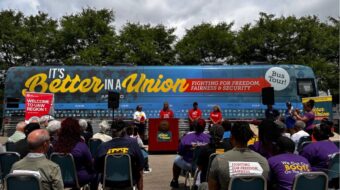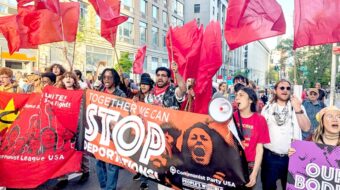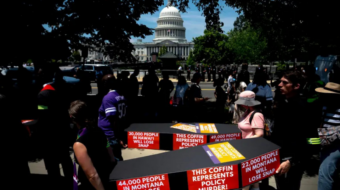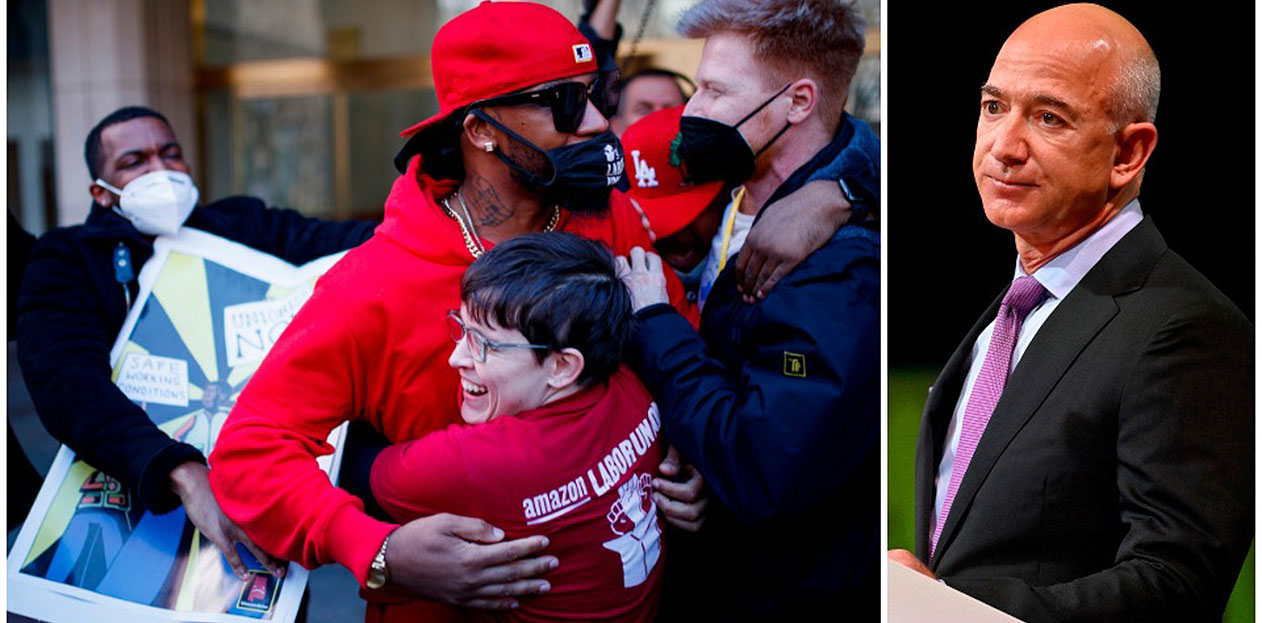
Workers and their allies hit the streets in 2022 in ways that caused the country to pay attention to their issues, their causes, and their unions.
There for all to see was the determination of an independent grass-roots union, the Amazon Labor Union, to confront one of the nation’s three richest men, Jeff Bezos, and his monster goliath, Amazon, over wages and working conditions. They bested Bezos and won the union recognition election at the JFK8 warehouse on Staten Island by a healthy margin.
The nation saw workers hitting the streets for organizing drives and workers hitting the streets in record numbers in political campaigns. The workers were determined to turn back the fascist-minded Republicans engaging in a drive to undermine their rights. Workers were out there fighting a Supreme Court Trumpite majority, a Court determined to aid corporations and Republican lawmakers in their attacks on not just reproductive and voting rights but a whole host of other precious rights.
The energy displayed by workers and their allies this year was highly contagious. The Amazon Labor Union, for example, is now regularly invited to help organize other such grassroots union movements around the country and not just in warehousing.
There are many organizing campaigns continuing full steam ahead as are countless job actions. Corporations are, through their intransigence, forcing an unprecedented number of strikes. The National Labor Relations Board, hobbled during the Trump years by staff cuts and anti-labor court cases, is on the mend with the full support of workers and their unions. The agency is finally getting some of the funds it needs to operate.
The NLRB and its chief enforcement officer, General Counsel Jennifer Abruzzo, are moving strongly against bosses’ exploitative and abusive schemes to wreck workers’ rights—such as bosses using the “joint employer” dodge to evade responsibility for bargaining with workers, or for breaking labor law. Or using the “independent contractor” ruse to bar workers from organizing and labor law protection.
At the start of 2022, another grass-roots movement, Starbucks Workers United, broke through to organize a handful of Starbucks stores in Buffalo, New York. By the end of the year SWU—with the Service Employees’ aid—had organized more than 260 Starbucks stores and pulled off a nationwide weekend walkout in early December. The NLRB, after years of Trump control, is now seeking nationwide court orders against Starbucks’s rampant labor law-breaking.
SWU even forced Starbucks CEO Howard Schultz to grudgingly agree to bargain—until his lackeys and union busters reneged.
The Starbucks workers canvassed their legions and came up with three demands immediately posted on their website. They then held—or tried to hold—two bargaining sessions with Schultz’s toadies and his hired union buster and invited everyone to the bargaining via zoom, which bosses despised.
Walked out of first session
The bosses and the union buster walked out of the first session for a “caucus” after five minutes and never returned and walked out of the second just as fast because everyone was seeing the firm’s true nature exposed via the miracles of modern technology.
The worker action nationwide comes from the bottom—from the grassroots—whether we are talking about fed-up restaurant workers, Amazon workers, retail workers, fast food workers, Starbucks workers, adjunct professors, port truckers, railroad workers, and others rebelling against corporate greed and exploitation.
There is a major change in many places at the top also. At the AFL-CIO Liz Shuler and Fred Redmond are backing both the organizing and the political action that resulted in holding off a Republican wave that never rolled in the way it had been predicted to roll in.
Strikingly, to an unprecedented degree, the leadership of labor’s struggles was led by workers of color, women, and youth.
Labor leaders seen as out of touch with their members were often voted out of office.
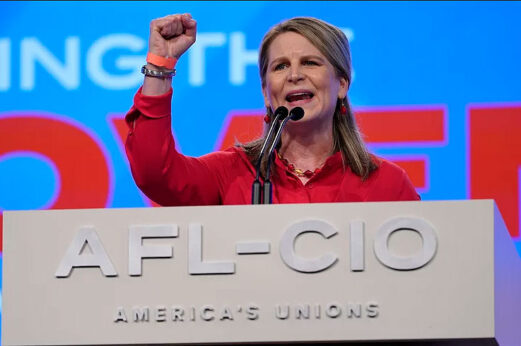
AFL-CIO President Liz Shuler herself helped put the word “movement” back into the labor movement: Setting organizing and political activism goals, erecting a structure and institute for organizing in the so-called “new economy,” promoting plans for a permanent political structure, with test cases this year in key swing states, and traveling the country speaking to workers, Shuler was out there in front of the major battles and gathering ideas from the newer, younger activists of all races and backgrounds.
She also welcomed the new grass-roots independent unions, offering them the full support of the nation’s largest labor federation. Her session in the Twin Cities with young worker-organizers this year was a good example of the new, more open, way of operating.
And that’s a key point: A lot of the new movement in the labor movement is charged up from below by younger workers, women, and workers of color—the workers who need unions the most and who suffer from the worst exploitation. The more of those workers that are unionized, the potentially more powerful the labor movement becomes.
Joe Sims, co-chair of the Communist Party USA, minces no words when he talks about the importance of an active and politically involved working class. “The growth in working-class activism,” he said, “is key to moving forward on all fronts.”
Sims points out that “with 70 percent of the American people favoring unions, there is a mass public basis for that activism.”
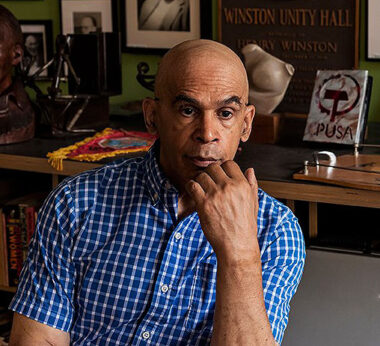
The CPUSA has been involved since the early part of the 20th Century in supporting that activism, an activism that much of the major media often ignores. Sims, who hails from a family of Steelworkers in Youngstown, Ohio, sees that activism as important today as it was at any time in the past.
“Some 78,000 workers in the first half of this year hit picket lines compared to 26,000 the year before,” he said. “And next year promises to be a year of important labor action: 230,000 UPS worker’s contracts expire in July and auto workers, may be set to go out as well in the fall with two-tier wages still a huge issue.”
Sims sees the need for pushing hard on workers’ rights, even with people or lawmakers seen as generally supportive of unions. ”The right to strike is a key issue,” he said. “And here the Biden and congressional intervention with the railroad workers must be rejected. We can never settle for the government taking away the right of workers to bargain through their unions, for a government forcing a deal workers reject. Sick days and time off have become a rallying point not just for the workers in the rail industry but for the class as a whole.”
Another major issue as far as Sims is concerned is the need for unity. “Unity remains a key among the unions, between unions and the community, and with elected officials. You can’t win without it,“ he said.




